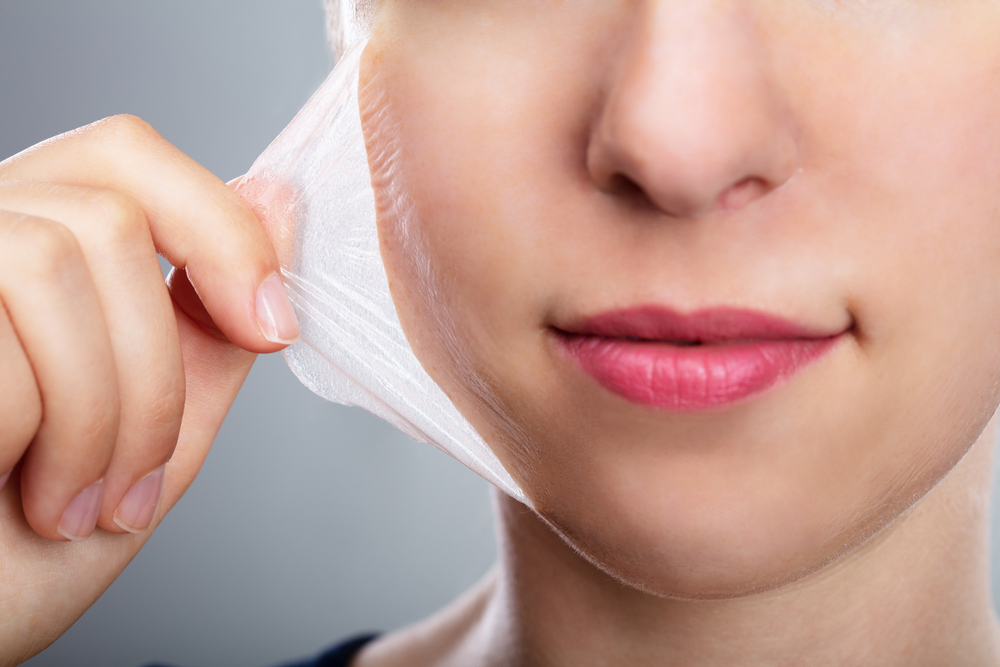A Charlotte chemical peel is a non-invasive way to treat a wide range of skin conditions and concerns. At Steele Creek Dermatology in Charlotte, NC, we proudly offer a wide range of peels that can treat a multitude of concerns. Today, we’re taking a closer look at what conditions this type of treatment can improve, who qualifies for treatment, and more. Read on to discover everything you need to know.
What Skin Conditions Are Best Treated With a Charlotte Chemical Peel?
If you opt for a glycolic peel, you can improve your skin tone and texture, helping reverse the effects of sun damage. You can also reduce fine lines with a glycolic peel. If you’re worried about wrinkles as well as fine lines, you may benefit the most from a medium peel rather than a superficial peel. Specifically, you may be a great fit for the VI peel.
The SkinCeuticals Advanced Corrective Peel may be right for you if you are concerned about your skin texture and tone and enlarged pores. You can also benefit from this peel if you are concerned about skin discoloration and not looking as young and healthy as you should. During your consultation, we will discuss your concerns and goals and advise you on what acids will most effectively treat your skin conditions.
What Are the Characteristics of a Good Dermapeeling Candidate?
To be considered a good chemical peel candidate, you should have fairly healthy skin that is free from such conditions as rashes and active infections. Additionally, good candidates for this type of treatment usually have fine lines, wrinkles, pigmentation concerns, like hyperpigmentation, or sun damage. Furthermore, you should be considered a good candidate for an acid peel if you are worried about regular acne outbreaks or acne scars.
Are There Any Preparation Steps Required Before a Charlotte Chemical Peel?
While dermapeeling is a safe, non-invasive treatment, there are some things you need to do beforehand to help ensure your treatment goes as smoothly as possible. For example, you must attend an initial consultation to discuss your skin health, overall health, drug use, concerns, and expectations. Depending on the medication you use, you may be considered a poor candidate for treatment.
To qualify for this treatment, you must avoid exfoliating your skin physically or chemically for at least seven days before your appointment. You also should avoid wearing makeup for a few days before your treatment. Moreover, you should wear a wide-brimmed hat and highly protective sunscreen for two weeks before your treatment to mitigate the likelihood that your skin will be burned.
How to Care for Your Skin After Treatment
To help ensure the best results from your treatment, you need to take good care of your skin while it recovers. One essential step you must take is to avoid using any products containing retinoids or tretinoins. Furthermore, you shouldn’t use topical acne medications or products that contain AHAs, BHAs, lightening agents, vitamin C, or benzoyl peroxide. Additionally, you must avoid exfoliating your skin for two weeks post-treatment.
You also must avoid potentially irritating cosmetic treatments, like laser resurfacing, facials, waxing, or IPL therapy, in the treated areas for 28 days post-treatment. Moreover, you should wait at least three weeks to dye your hair. This is to help prevent skin irritation. To keep your skin clean, use cool water, a gentle facial cleanser, and your fingertips. Using a loofah may irritate your skin.
Other Aftercare Guidelines to Follow
Another vital aftercare guideline to follow is to not expose your treated skin to direct sunlight. Similarly, you must avoid other tanning methods, like tanning beds, and exposure to excessive heat for four weeks post-treatment. For two to three days after your peel, you must avoid strenuous physical exertion. However, it is ideal to avoid vigorous exercise until your skin has finished peeling.
It is also important that you keep your skin moisturized. Make sure that you apply a gentle moisturizer to your treated areas daily, especially once your skin starts peeling. Typically, peeling starts three to four days after treatment, and the length of time your skin will peel depends on the strength of the chemical peel you get and other factors.
How Long the Results of Your Treatment Will Last
You can generally expect to enjoy your optimal results for a month or two if you get a superficial peel. If you get a course of medium peels and eliminate acne scars completely, you don’t need to worry about them returning. If you get a medium peel to correct other concerns, like lines and wrinkles, you may be able to enjoy your optimal results for roughly six months.
To help extend the longevity of your results, you should keep your skin moisturized, nourished, and protected from the sun.
Schedule an Evaluation for You
The skin problems best treated with dermapeeling depends on the type of peel you choose. Some of the problems that can be treated with this type of treatment include lines, wrinkles, tone problems, and texture problems. To learn more about this treatment, contact us today at Steele Creek Dermatology in Charlotte, NC to schedule an initial evaluation.


